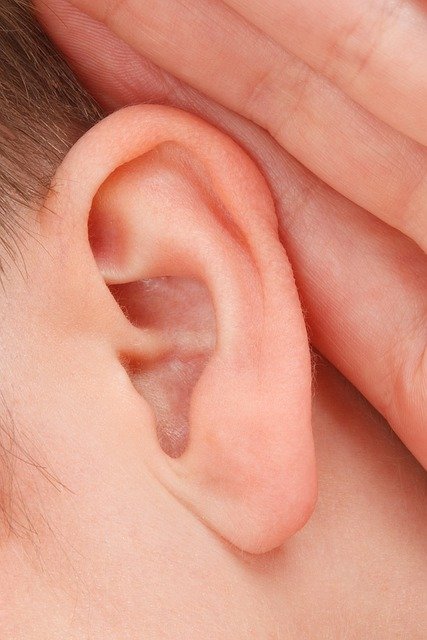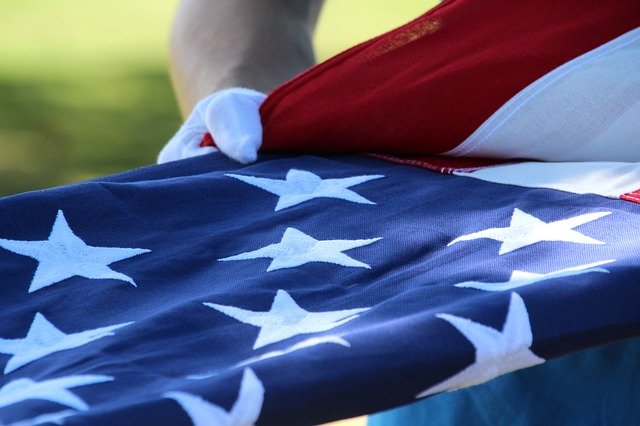Author: Lisa Hyde-Barrett

Defining Your Personal Space During Your Mesothelioma Journey
Mesothelioma patients often face a busy schedule when initially diagnosed, and when they begin undergoing treatments. There are a lot of tests and consultations, and decisions to be made. There is a sense of urgency in getting treatment under way as soon as possible. During this phase of the disease, family and friends are frequently rallying around and trying to provide as much support as possible. There are other patients also offering support if needed. Support groups, friendships, and new relationships are formed.
At the end of the journey, when a person has exhausted his clinical options and has shifted to hospice or comfort care, the path is not as clear. We recently had a mesothelioma patient whose journey was at its end. During his battle with mesothelioma, he conducted extensive research and was willing to try anything. But now, he had no more options, and he decided to stay home with his wife and keep things as “normal” as possible. His sons were not living at home, and he elected to have them come home a weekend after he had made the decision to enter hospice. Over this weekend they talked, reminisced, and acknowledged that he was dying. The sons went back to their lives until the final weekend of his life. During this time his wife was caring for him.
We were surprised at the couple’s reluctance to ask for help from their large, extended family and network of friends. Up until the last weekend his wife was taking total care of him and the house.
The last weekend was a different story – they had called home their sons, and let family members in to be with them. He died peacefully at home surrounded by his loved ones.
Everyone’s journey is different, as is everyone’s response to it. We are all unique individuals, and we have the right to decide when to let people in.
Sometimes space, both physical and mental, is needed for people to process and decide how they want to move forward. To allow a person and their loved one that space is sometimes the best support you can offer.

Combination of Electric Fields and Chemotherapy May Be A New Treatment Option for Pleural Mesothelioma Patients
The key to increasing survival for mesothelioma patients is to kill the cancer cells before they can spread to other organs. Treatment options, including surgery, chemotherapy and radiation, all contribute to a patient’s survival, but many times the prognosis remains unchanged. Now, one company has turned to experimenting with delivering electromagnetic waves to the chest of pleural mesothelioma patients and reports improvements in overall survival when combined with chemotherapy.
Novocure, a UK-based medical device company that develops and markets Tumor Treating Fields delivery systems, developed the novel devices as an alternative way to destroy tumor cells while sparing healthy tissue. Already approved by the U.S. Food and Drug Administration for the treatment of brain cancer, the device is now in a Phase II clinical trial for pleural mesothelioma patients.
In April, researchers gave an interim review of the STELLAR clinical trial reporting that the first 42 pleural mesothelioma patients treated with the combination of Tumor Treating Fields (TTF) and pemetrexed and cisplatin or carboplatin had a one-year survival rate of 80 percent, compared to 50 percent in the chemotherapy only patients. Median progression free survival was 7.3 months versus just 5.7 months in the chemotherapy controlled group.
“We are extremely pleased with these top-line results, which bring us one step closer to realizing the potential for a new treatment for mesothelioma patients in desperate need,” said Dr. Eilon Kirson, Novocure’s Chief Science Officer and Head of Research and Development, in an April 17 press release.
The NovoTTF-100L device used in the clinical trial provides mesothelioma patients with a round-the-clock treatment option that allows them to maintain an active lifestyle without interference to activities such as walking outdoors, shopping, and cleaning. Connected to the patient via insulated electrode arrays placed on the upper torso, the device delivers low-intensity alternating electric fields to the region near the mesothelioma tumors. The TTF is inconspicuous and light enough to carry to most functions and activities. The device needs to be active approximately 18 hours a day. According to the company’s website there are no limiting side effects.
“Mesothelioma is the first torso indication for which Novocure will pursue FDA approval,” said Dr. Kirson.
Novocure previously received a Humanitarian Use Device (HUD) designation for the use of TTF for pleural mesothelioma. The next step is to submit a Humanitarian Device Exemption (HDE) application to the FDA. For medical devices, an HDE exempts the businesses from proving effectiveness of the device. However, the company must show that the HUD “will not expose patients to an unreasonable or significant risk of illness or injury and the probable benefit to health from use of the device outweighs the risk of injury or illness from its use, ” according to the HDE application requirements.
Pleural mesothelioma, a rare form of cancer affecting the lining of the lungs, is highly aggressive and is resistant to many cancer treatments. Most often diagnoses are not made until symptoms appear and the disease has progressed to an advanced stage leaving the patient with life-threatening complications. 3,000 Americans are diagnosed with mesothelioma each year.
Sources :
- STELLAR clinical trial
https://clinicaltrials.gov/ct2/show/NCT02397928 - Novocure’s Chief Science Officer and Head of Research and Development
https://www.novocure.com/novocure-reports-positive-top-line-results-from-stellar-phase-2-pilot-trial-in-mesothelioma/ - NovoTTF-100L
https://www.novocuretrial.com/stellar-mesothelioma/living-with-ttfields/ - Humanitarian Device Exemption
https://www.fda.gov/medicaldevices/deviceregulationandguidance/howtomarketyourdevice/premarketsubmissions/humanitariandeviceexemption/default.htm - HDE application requirements
https://www.fda.gov/MedicalDevices/DeviceRegulationandGuidance/HowtoMarketYourDevice/PremarketSubmissions/HumanitarianDeviceExemption/ucm563286.htm

Do You Hear What I Hear? Mesothelioma Nurse Explains What Can Influence What You Hear
When you visit the doctor when you are dealing with a frightening diagnosis such as malignant mesothelioma, it is easy to get a little confused while you try to familiarize yourself with new medical terms. You may hear something one way, but your support person, who was also at the appointment, heard something different. This can happen to anyone. There are reasons for hearing the same words, but not hearing what the person is trying to say.
There is a four-second audio clip going around the internet that is an example of how people hear differently. People are divided into two camps on what they hear in the computer-generated clip: half hear “Laurel” while the other half hear “Yanny.” When you say those words they sound totally different. How can people hear the same clip, but interpret it differently?
There are actually scientific reasons that can explain why we hear one or the other. Whether someone hears Laurel or Yanny can depend on how old they are- as we age our ears hear fewer sounds on the high pitched range. Those folks will hear Laurel. What you are hearing the audio clip on also can influence what you hear. The more high pitched the sound or tinny the speakers , the more people hear Yanny. There is also the element of someone putting the suggestion into your brain by asking in advance what do you hear, Yanny or Laurel. This can influence what you hear.
When you are at important medical appointments, remember to ask for clarification from your team. Repeat what you understand you heard. Clarification, explaining your understanding of the information, and repeating it out loud, can all help to avoid misinformation.
Communication and interpretation must be clear so that the same message is heard by both the patient and the family member.
Yanny or Laurel is an interesting, fun clip on the internet. It shows how easily we can hear things differently. But it is also a lesson in discussing what it is you are hearing when it comes to your mesothelioma treatment.

Honor our Fallen Veterans This Memorial Day
Pools open across the U.S., families flock to the beach, and school-aged kids look forward to summer vacation on Memorial Day. Although the day is seen as the unofficial start of summer, it is meant to honor all those who died while serving in the U.S. military.
According to USMemorialDay.org, over 1.8 million soldiers have given their lives for America since 1775. Among foreign wars, World War II was the deadliest for the U.S. with 405,399 lives lost. The number of U.S. military personnel killed in the Korean War was 33,686, and in the Vietnam War 58,209. Current U.S. wars in Iraq and Afghanistan have claimed over 7,000 American lives.
Still more lost their lives long after the battlefield or service from injuries or illnesses, such as mesothelioma, suffered from their service. Some U.S. soldiers have successfully ended their military career only to be stricken with health issues later due to exposure to toxic materials, including asbestos.
According to the U.S. Department of Veterans Affairs, veterans who served in any of the following occupations may have been exposed to asbestos: mining, milling, shipyard work, insulation work, demolition of old buildings, carpentry and construction, manufacturing and installation of products such as flooring and roofing. In addition, the VA reports that the latest generation of war veterans, those who served in Iraq and other countries in that region, could have been exposed to asbestos when older buildings were damaged and the contaminants were released into the air.
The inhalation of asbestos fibers has been associated with lung cancer and mesothelioma. Pleural mesothelioma is a rare cancer affecting the lining of the lungs that is extremely difficult to treat and is virtually impossible to cure. Although nearly 3,000 new cases are reported annually in the U.S., statistics show that military veterans account for over one-third of those cases.
All of us at MesotheliomaHelp encourage all Americans to take a moment out of your busy Memorial Day to honor those who have served our country. In coordination with the National Moment of Remembrance, observed at 3:00pm local time, “pause for one minute … to remember and reflect on the sacrifices made by so many to provide freedom for all.”
Sources
- U.S. Department of Veterans Affairs
http://www.publichealth.va.gov/exposures/asbestos/index.asp - National Moment of Remembrance
http://www.usmemorialday.org/?p=97

Sheri Sanford Mesothelioma Essay
Watching a family member or friend suffer from mesothelioma is heartbreaking and life changing for an individual. The topic was briefly mentioned in my biology class in high school as an aggressive cancer in the lining of the lungs or abdomen. As the case may be, maybe I possessed a slight degree of naiveté that allowed me to believe my family was untouchable and that would never happen to anyone I loved. I was wrong. My beloved uncle, Dale, mentioned the most horrific word imaginable in the summer of 2016: cancer.
Dale had been in the construction business his entire life, once retired he found pleasure working on his 1966 Shelby 427 Cobra. He had been in the car garage when he experienced shortness of breath and a pain in his chest. He was referred to an oncologist the same day. It took less than a week for my world to crumble around me, and he went from working on his cherished vintage car to signing over the title to someone new to help pay for cancer treatments. In my family, I took the devastating news the hardest as my uncle was like a father-figure to me, and I began to disconnect from the world. I pretended it didn’t exist, but the truth was that it was very much present and it was aggressive like a destructive tornado rushing through not only my uncle, but our entire family and friends. You see, when a family member gets cancer, it’s like everyone has the disease, because it is so crippling emotionally and physically.
I received my BA in Political Science and International Relations in the spring of 2017. For the first time in a while, I felt this strange feeling of happiness, after realizing how far I’ve come in my education I was especially proud that I made my uncle’s milestone. He wanted to see me graduate college, and he did. Watching my ceremony over Facetime, his smile was from ear to ear. My uncle unfortunately died from the disease in the summer of 2017. After initial pain, shock, and sadness of my deceased family member started to slowly fade and the lingering throb of sadness pulsated in my body for weeks on end in an endless loop of a nightmare, I decided I needed to do something to help people like my uncle and their families. I completely reversed my career choices, I began to revoke my applications to law schools that summer and decided upon an education in medicine. I am currently pursuing a master’s degree in Physician Assistant with a focus on Oncology. I am applying to Physician Assistant schools this summer, hoping to start next summer if accepted.
My uncle is not just a simple statistic. He is much more than that and Stage IV Mesothelioma will not define him. The people diagnosed with mesothelioma are real loving people, and like myself, most people think it will not happen to them or anyone they love when in fact “research shows more than 20 million people in the United States are at risk of developing malignant mesothelioma due to asbestos exposure” (“Mesothelioma”). Awareness about asbestos is extremely crucial for every individual to be knowledgeable of, to prevent this crippling disease or catch it in the early stages. Just education alone about asbestos seems to simple, but it is so crucial when it is life-changing knowledge. Asbestos exposure is the only cause of malignant mesothelioma. Asbestos were fibers once widely used in buildings, industrial, commercial, and housing products and it still present in millions of U.S. workplaces and homes (“Mesothelioma”). These fibers, once ingested or inhaled, take at least 15 years to creep up into your life in the form of a dangerous form of cancer. It is so important to be educated on the symptoms of mesothelioma and the locations asbestos may be present to catch the cancer early and have the longest life expectancy possible. I lost my uncle after he caught the cancer in a very advanced stage and he died in less than a year. People need to know that early detection is key to spending more time with your family and prolonging your life.
It’s hard to know what to say to an individual with mesothelioma or a family member of someone whom died from mesothelioma. Even when my hearts in the right place, it would be difficult for words to compile themselves to even make a solid sentence. It would be extremely important to me for them to know that there is no way to be truly prepared for the future and that having plenty caring and supportive people around you is crucial for healing. Walking into my uncle’s hospital room all I saw was tears, a room full of sadness and the word “cancer” radiate through the room. I wish I could be as strong for my uncle as he was strong for me. Yet, my uncles’ strength inspired me to face my fears. Hearing the word “cancer” in my uncles’ room so often, talking to a mesothelioma patient I would be sure to talk about topics other than cancer to help provide a sense of balance. I would try to stay as positive as possible and be hopeful of a brighter future. I would say to them “let me know if you need anything,” as this is especially essential considering most individuals will never ask for help even though they need it. I truly have gone through the experience of having a sick family member, and I could shed some light onto their experiences and grieving process in a positive way. Staying strong, never, ever giving up and letting them know they are not alone is key. I will never forget my uncle and the memories we shared, and I hope going in the Oncology field, I am able to keep his spirit alive helping other individuals suffering from mesothelioma.
References:
“Mesothelioma Statistics.” MesotheliomaHelp.org. N.p., n.d. Web. 01 Jan. 2017.
Free Mesothelioma Patient & Treatment Guide
We’d like to offer you our in-depth guide, “A Patient’s Guide to Mesothelioma,” absolutely free of charge.
It contains a wealth of information and resources to help you better understand the condition, choose (and afford) appropriate treatment, and exercise your legal right to compensation.
Download Now